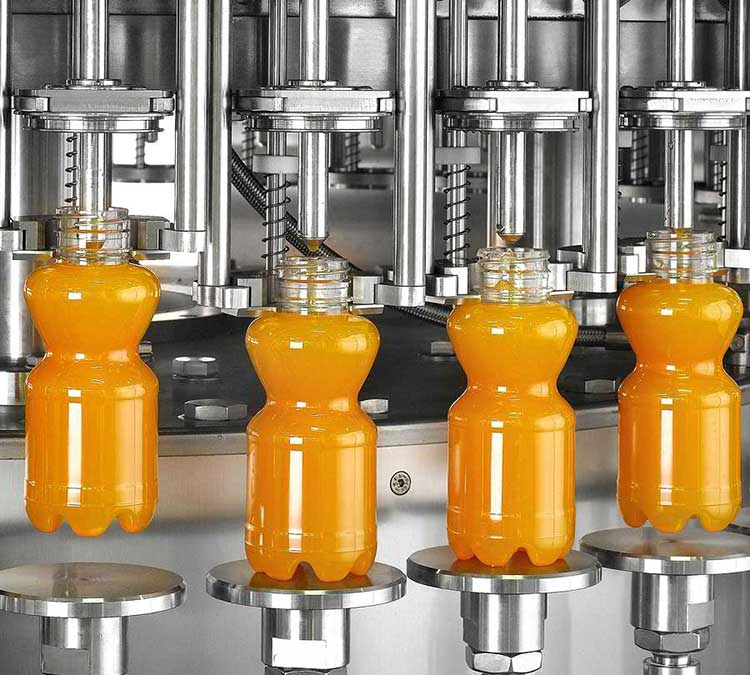Small Liquid Filling Machine: The Complete Buying Guide In 2025
The process of filling liquids into containers isn’t a simple one. Often, even small volumes require sophisticated machinery to accurately and efficiently measure, move and contain the liquid prior to labeling, packaging and delivery. With such an extensive array of vessels available in different capacities and shapes, it is essential businesses seek out the right automated solution for their needs.
Fortunately, modern technology has made liquid filling easier than ever before with small liquid filling machines becoming increasingly popular amongst businesses across a range of industries. This type of system is versatile and can quickly fill containers with virtually any kind of liquid, including water, beverages, oils, cosmetics and even hazardous liquids.
In this blog post we will take a closer look at why exactly you should choose a small liquid filling machine for your business’ operation needs.
1.What Is A Small Liquid Filling Machine?
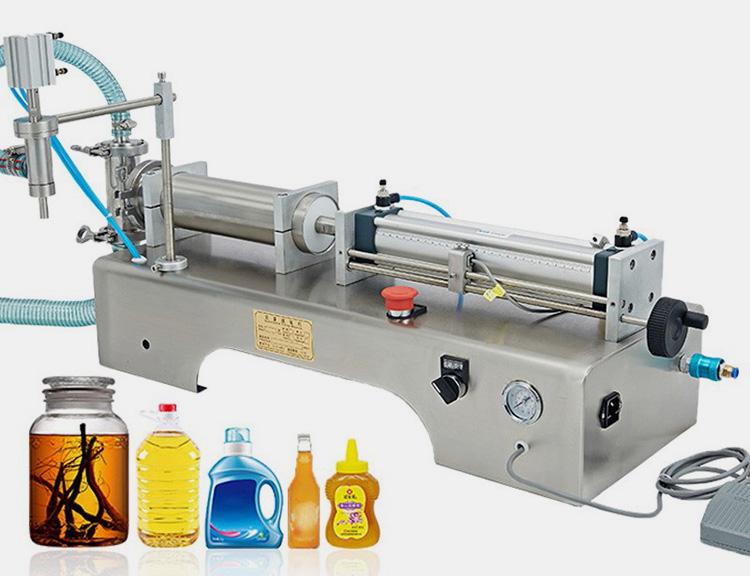
A small liquid filling machine is an automated device used to package and fill small volumes of liquids into bottles, containers or other types of receptacles. They are commonly used in the food and beverage industry, pharmaceuticals, personal care products, chemicals and other industries that require small volume liquid packaging.
Small liquid filling machines typically use either a piston-style system or a peristaltic pump to fill small bottles with precise amounts of liquid. They can also be used in combination with capping systems and labeling machines to form complete packaging lines.
Small liquid filling machines are available in manual, semi-automatic and fully automatic models depending on the application requirements. They offer flexible features such as adjustable process speeds, no-drip filling and customizable nozzle shapes. This makes small liquid filling machines a great option for small-scale production lines and businesses.
2.What Are The Components Of A Small Liquid Filling Machine?
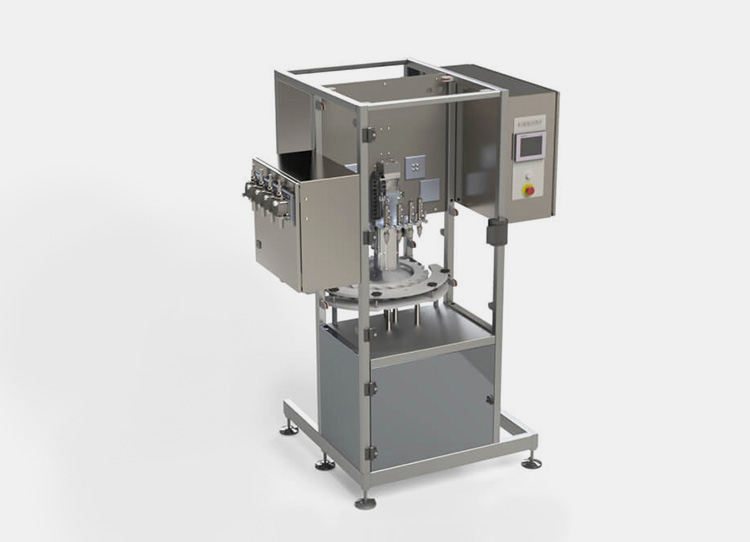
A small liquid filling machine typically consists of the following components:
Filling Nozzles
These are used to dispense precise amounts of liquid into a container. They can be adjusted for different speed, volume and even temperature settings.
Hopper
This is where the material to be filled is stored before it is dispensed.
Positioning system
This ensures that the container to be filled is in the right position before the filling process begins.
Dispensing Valve
This controls the amount of liquid that is released from the hopper into the container. It can be adjusted for different flow rates, speeds and volumes.
Control Panel
This is used to set the parameters of the filling process, such as speed and volume.
Safety Features
These can include enclosures that protect operators from contact with any material being filled, sensors to detect any leaks or spills, and emergency shut-off switches.
Conveyor System
This is used to transport containers through the filling process.
3.What Are The Advantages A Small Liquid Filling Machine?

Precision
Small liquid filling machines are designed with precision in mind, allowing for accurate and consistent fill levels. This is especially useful when working with small bottle sizes or specialized products.
Accuracy
Small liquid filling machines have small precision nozzles that allow for accurate filling. This means that small-scale production of products can be done quickly, with minimal wastage of materials.
Versatility
Small liquid filling machines are capable of handling a wide range of containers and products, including small bottles, jars and tubes. This makes them ideal for small-scale operations that may require a versatile range of products.
Cost-effectiveness
Small liquid filling machines are usually far more cost effective than larger, industrial grade models due to their small size and limited production capabilities. This makes them ideal for small businesses or start-ups looking to keep costs down while still ensuring accuracy in the product.
Ease Of Use
Small liquid filling machines are generally easier to use than larger models due to their small size and simpler controls. This makes them ideal for first-time users or operators with limited experience in the field.
Speed
Small liquid filling machines can often be faster than larger models, meaning that small businesses or start-ups can increase their production rate while still maintaining accuracy. This can be an invaluable asset when trying to meet tight timelines or deadlines.
4.What Are The Applications Of A Small Liquid Filling Machine?
Pharmaceutical Manufacturing
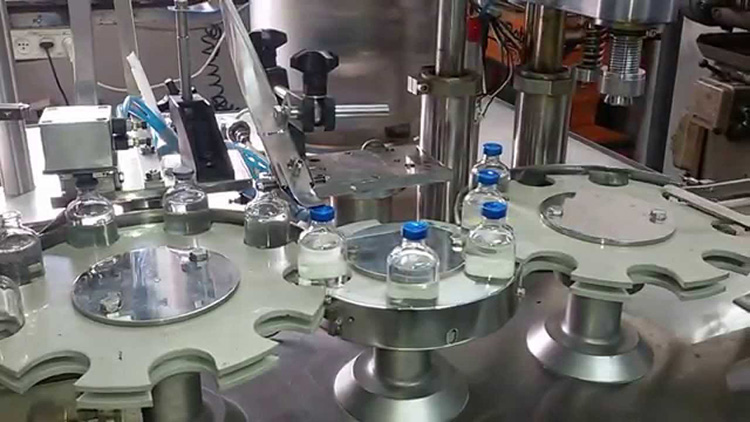
Small liquid filling machines are used in the pharmaceutical industry to fill small doses of medicines or drugs into small containers such as vials and capsules.
Cosmetics Production
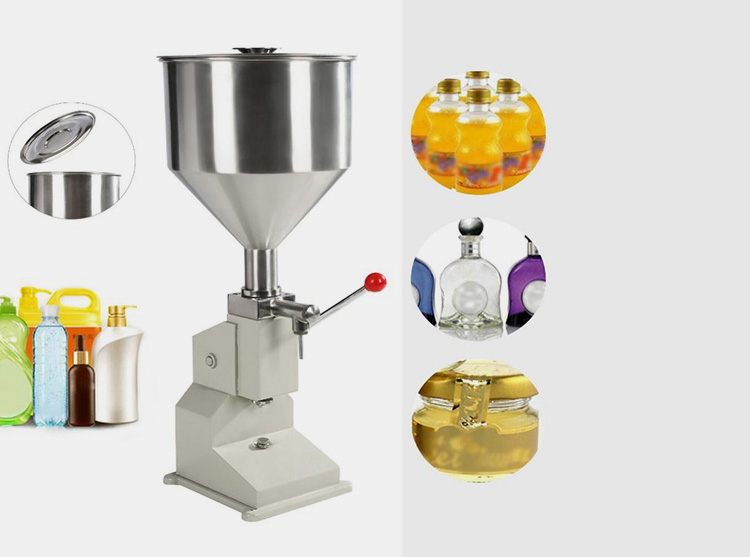
Small liquid filling machines are perfect for small-scale cosmetics production, making it easy to fill small containers with creams, lotions, and other small-volume liquids.
Food and Beverage Production
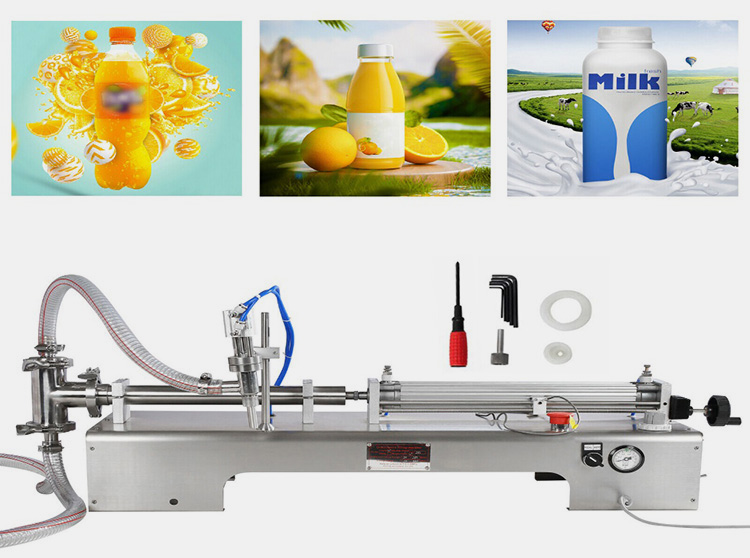
Small liquid filling machines are ideal for small-scale food and beverage production, allowing producers to fill small containers such as bottles and cans with sauces, dressings, syrups and more.
Chemical Manufacturing
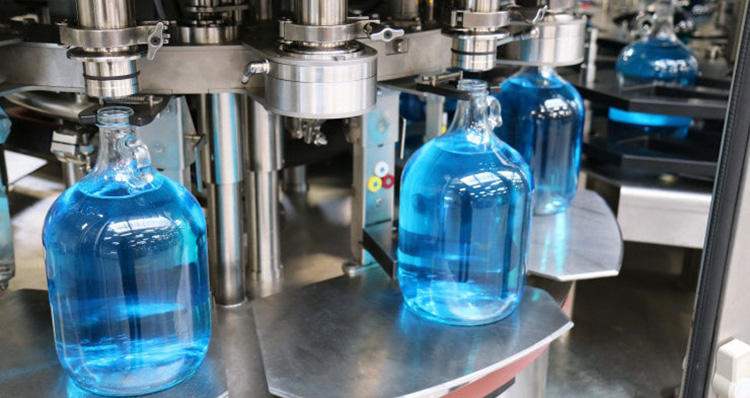
Small liquid filling machines can be used to fill small containers with small volumes of chemicals such as acids, bases and solvents.
Testing Labs
Small liquid filling machines are also used in testing labs to fill small containers with small-volume solutions that can be used for lab experiments.
Industrial Manufacturing
Small liquid filling machines can also be used in small-scale industrial manufacturing processes, such as the filling of small containers with small volumes of lubricants and other small-volume liquids.
Research and Development
Small liquid filling machines can also be used in research and development facilities to fill small containers with small-volume samples for testing purposes.
5.What Are The Working Principles Of A Small Liquid Filling Machine?

A small liquid filling machine works by using a piston to move the product from the source container into small bottles or containers. The small bottles are placed under the nozzle of the machine, and when the piston is activated, it pushes small amounts of liquid into each bottle.
When all of the small bottles have been filled, an automated system releases a small amount of pressure to prevent overfilling. The small liquid filling machine is then ready to be used again for the next batch of small bottles or containers.
6.What Are Different Liquid Filling Systems That Are Present In A Small Liquid Filling Machine?
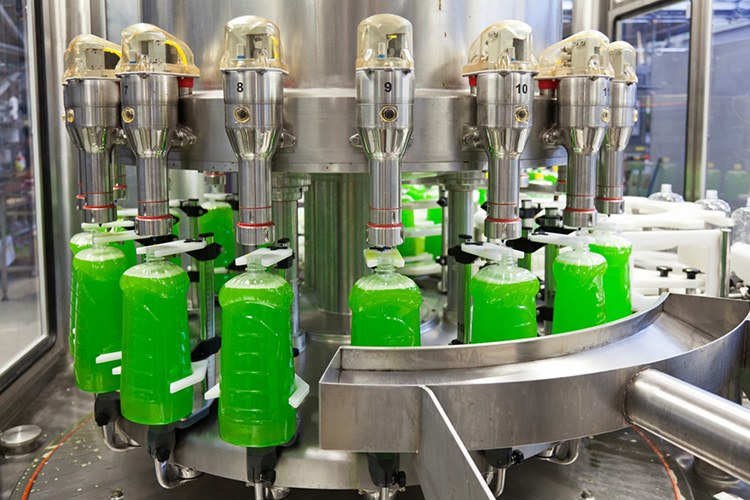
A small liquid filling machine typically consists of several liquid systems, each of which has different roles in filling containers with liquids. These systems are:
Level Filling System
This system is used for filling containers with small to medium sized volumes of liquid. It uses a sensor to detect the level in the container, and then will automatically fill up to that point.
Weight Filling System
This system utilizes a load cell to measure weight during the filling process and adjusts accordingly until it reaches the desired amount of product.
Gravity Filling System
This system utilizes gravity to fill containers with small amounts of liquid, typically up to 10ml in size.
Vacuum Filling System
This system relies on a vacuum source to move liquids from a tank or reservoir into the container being filled. It is generally used for small volumes and low pressure systems.
Pressure Filling System
This system utilizes pumps and/or valves to move liquid into the container being filled at higher pressures than gravity or vacuum filling systems. It is generally used for larger volumes of liquids and higher pressure requirements.
Timed Dosing System
This system uses a timer to control the amount of liquid that is dispensed into the container. It is mostly used to fill small containers with small volumes of liquid and can be very accurate in its dosing.
Volumetric Filling System
This system uses a piston and cylinder to measure the exact volume of liquid that is being dispensed into the container. It is generally used for small to medium sized volumes of liquids.
7.What Are The Different Types Of Small Liquid Filling Machines Available On The Market?
a) Small Manual Liquid Fillers
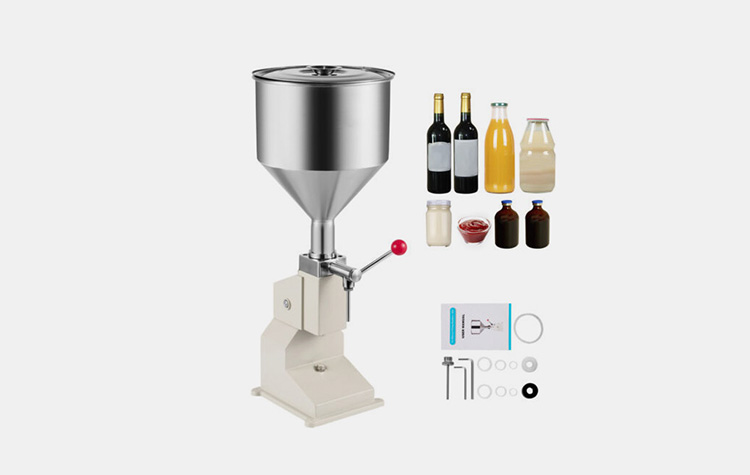
Small manual liquid fillers are the simplest type of small liquid filling machines. They are typically small and easy to use, making them ideal for small production runs or labs with small batches to fill. They require very little maintenance and no electricity, making them cost-efficient as well. Manual small liquid fillers can handle products with low to medium viscosity.
Components
The components of small manual liquid fillers include:
Tank
This is the container used to store the liquid being filled. The tank should be made of a material that can withstand contact with the liquid, such as stainless steel or food grade plastic.
Metering System
This component dispenses small amounts of product into individual containers. This is usually achieved through a volumetric pump or piston filler that can accurately dose small volumes of liquid.
Nozzles
The nozzle dispenses the small amounts of liquid into each container, and should be designed to prevent dripping and leakage.
Conveyor System
This component transports containers underneath the nozzle to be filled.
Controls Panel
This component controls the overall operation of the system, such as filling speed, container size and volume dispensed. The controls are usually powered by an electronic PLC (programmable logic controller).
Safety Features
Depending on the application small manual liquid fillers may require additional safety features, such as emergency shut-off buttons or sensors for containers that are not correctly positioned.
Working principles
Small manual liquid filler typically features an open tank which houses the product, allowing it to be gravity fed into small nozzles that have been connected to each container or bottle. The operator uses a twistable handle to control the nozzle and dispense small, measured amounts of the product into each container.
In most small manual liquid fillers, a timer can be set which will automatically cut off the flow of liquid once the desired amount has been dispensed. This ensures that each container or bottle contains an exact and consistent amount of product.
Additionally, small manual liquid fillers usually feature a foot pedal to enable the operator to control the amount of liquid that is dispensed. This allows for even more precise filling than can be achieved with a twistable handle alone.
Applications
Small manual liquid fillers are often used in the food and beverage industry, for filling small bottles with sauces, syrups, and other liquids. They can also be used to fill small containers with pharmaceutical products or laboratory reagents. Additionally, small manual liquid fillers are often used in industrial settings, such as paint and ink manufacturers, for filling small containers with paints, oils, and other fluids.
b) Small Automatic Liquid Filling Machines
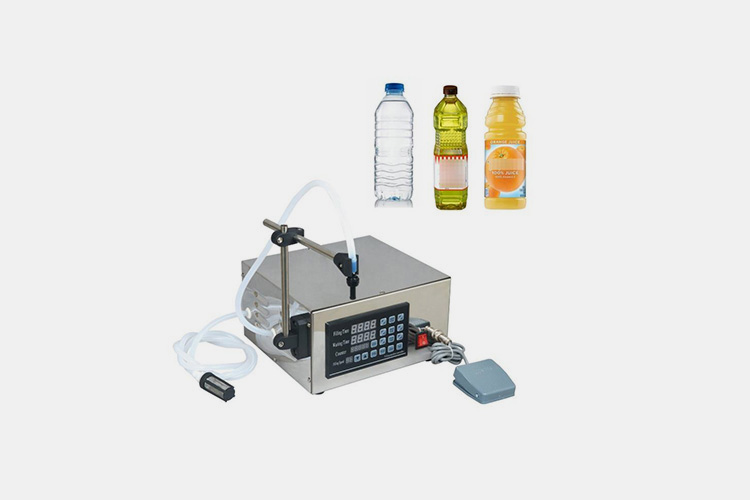
Small automatic liquid fillers are automated machines that are designed for small batches of products with a low to medium viscosity. These small liquid filling machines use a timer-controlled shutoff nozzle to ensure accurate and repeatable fills. They require very little maintenance and no electricity, making them cost-efficient as well.
Components
Reservoirs
Reservoirs are tanks that store the liquid being filled and can range in size from several liters to hundreds of gallons. They hold the liquid until it is ready for filling or delivery out of the reservoir into small bottles, containers, or pouches.
Pump/Valves
The pump or valves draw liquid from the reservoir into small fill lines and then control the flow rate for accurate filling.
Filling Heads
The filling heads are small nozzles that dispense the liquid from the pumps or valves. They can be gravity-fed, pressure-sensitive, electronically operated, and so on.
Meters
Meters measure the volume of liquid being dispensed and act as a control point to ensure that the correct amount is filled into each bottle, container, or pouch.
Working Principles
The working principles of small automatic liquid filling machines involve a combination of mechanical, electrical, and pneumatic components that work together to accurately dispense small amounts of liquid into small containers.
The process begins with the container being placed onto the machine’s conveyor belt. The small container is then transported to a filling station where it is held in place by a set of clamps. A small pump, usually powered by a motor, pumps the liquid into the small container until the desired amount has been dispensed, typically measured either volumetrically or gravimetrically.
During the process, a small valve is used to control the flow of liquid into the container and shut off when the desired amount has been reached. Once the small container is full, it is moved onto an extraction station where another set of clamps holds it in place while an ejector pushes it out of the machine.
Applications
These machines are most commonly used in the food, beverage, chemical and cosmetic industries to fill bottles, containers, sachets and cartridges with liquids or viscous products. Small automatic liquid filling machines can be used for products such as sauces, dressings, soups, oils and lotions. They are also suitable for a variety of small scale production lines such as those that produce shampoo, conditioner, hand sanitizers, detergents and other personal care items.
c)Small Semi-Automatic Liquid Filling Machines

Small semi-automatic liquid fillers are automated machines that can handle small batches of products with a low to medium viscosity. These small liquid filling machines come with integrated control systems and sensors, making them ideal for small production runs or laboratories with small batches to fill. They require very little maintenance and no electricity, making them cost-efficient as well.
Components
The components of small semi-automatic liquid filling machines are:
Filling Nozzle
This is the part of the filling machine which delivers small, precise doses of liquid into containers. The nozzle can be adjusted to different sizes and shapes depending on the type and shape of container it is being used to fill.
Filling Tank
This is the container which holds the liquid to be filled into containers. The tank can be made from plastic, stainless steel or other materials and it needs to be kept clean and sterile in order for it to work effectively.
Control Panel
This is the control panel on small semi-automatic liquid filling machines which allows the user to set the speed and amount of liquid to be filled. The control panel also includes a timer function so that the user can keep track of when each container is filled.
Pressure Regulator
This is an important component which helps ensure consistent pressure in the tank so that the correct dose of liquid can be delivered each time.
Pump
This is the part of small semi-automatic liquid filling machines which pumps the liquid from the tank to the nozzle and into the containers.
Relay Valve
This is a small valve which helps regulate the flow of liquid from the tank to the nozzle, ensuring that only small, precise doses of liquid are delivered each time.
Accumulator
This is the part of small semi-automatic liquid filling machines which stores and collects the excess liquid which may be left over after each dose is filled into a container. The accumulator ensures that no liquid is wasted and also helps to prevent spillage.
Working Principles
Small semi-automatic liquid filling machines work on the principle of positive displacement. A small plunger or piston is used to push a small quantity of liquid into the container, and then retracts to allow for more product to be filled. This process is repeated until the desired quantity of product has been filled. The machines are operated by either manual or automated controls, depending on the needs of the customer.
Applications
Small semi-automatic liquid filling machines are versatile and can be used in a wide range of industries, including pharmaceuticals, food & beverage, cosmetics and chemical production. quickly and accurately. They can be used in these industries for bottling and packaging liquids such as syrups, oils, food products, cleaning supplies, and more.
8.What Is The Difference Between Small Liquid Filling Machine And High Liquid Filling Machine?
a) Small Liquid Filing Machine
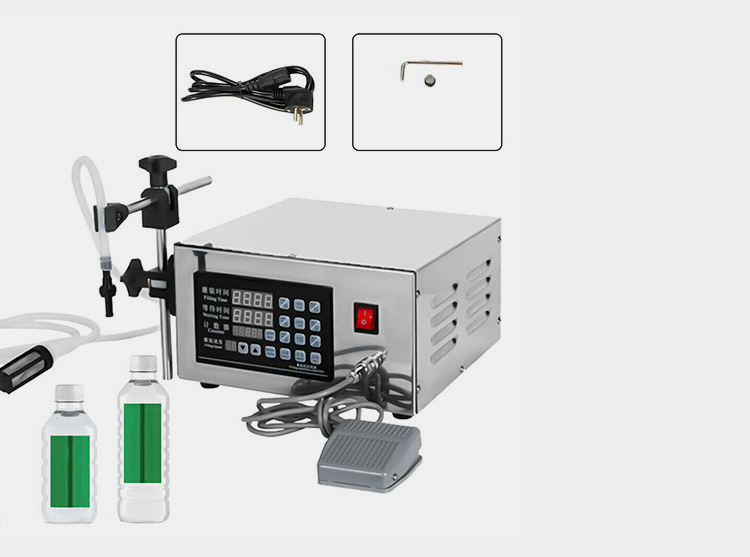
b) High Liquid Filling Machine
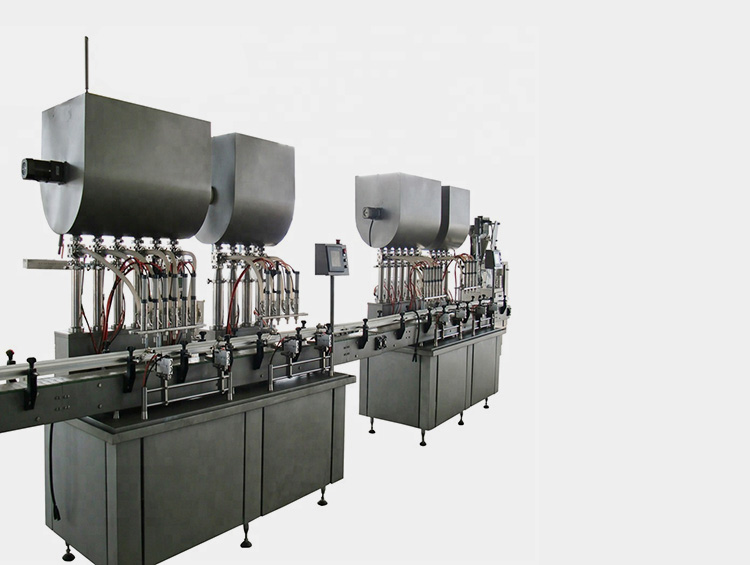
The main difference between small liquid filling machines and high-speed liquid filling machines is in their speed. A small liquid filling machine typically fills containers at a rate of up to 40 containers per minute, while a high-speed liquid filling machine can fill up to 200 containers per minute.
Smaller machines are ideal for small businesses that need to fill small batches at a time, while larger machines are better suited for businesses that handle high volumes of production. In addition to speed, small liquid filling machines tend to have smaller features such as nozzles and valves, making them easier to operate and maintain.
Meanwhile, high-speed liquid filling machines feature more sophisticated technologies such as automated shutoff valves and pressure control systems. These features help to ensure consistent and accurate filling of containers at a high rate of speed.
In addition to their speed and features, small and high-speed liquid filling machines also differ in their price. Small liquid filling machines are typically more affordable than high-speed models, making them a great choice for small businesses on a budget.
On the other hand, high-speed machines, however, tend to cost much more due to the advanced technology they include
9.What Is The Difference Between Manual Liquid Filling Machine and Automatic Liquid Filling Machine?
a) Manual Liquid Filling Machine

b) Automatic Liquid Filling Machine
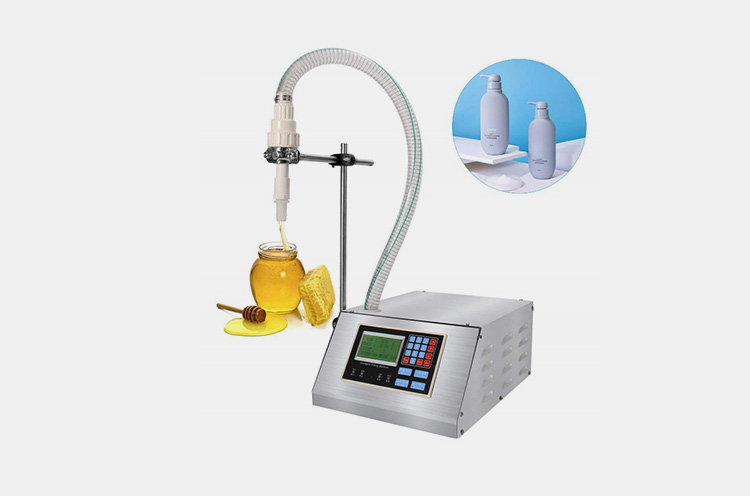
Manual liquid filling machines are small and compact, and require an operator to manually control the device. They are ideal for small scale production and typically feature adjustable settings which allow users to determine the volume of each fill.
Automatic liquid filling machines, on the other hand, use automated systems to deliver precise amounts of product with little or no human intervention. They are generally more expensive than manual filling machines, but offer faster production times with greater accuracy and consistency.
Automatic liquid fillers can also be programmed to handle a variety of different liquids and containers without requiring extensive adjustments, making them ideal for higher-volume applications.
In addition, manual liquid filling machines are designed to handle small batches and can easily be connected to small-scale production lines.
10.What Type Of Products Can Be Filled Using A Small Liquid Filling Machine?
A small liquid filling machine can be used for a variety of products. Here are some examples:
Beverages

Soft drinks, fruit juices, tea and other beverages can be filled using small liquid filling machines. The small size allows for quick and efficient production of small runs.
Sauces
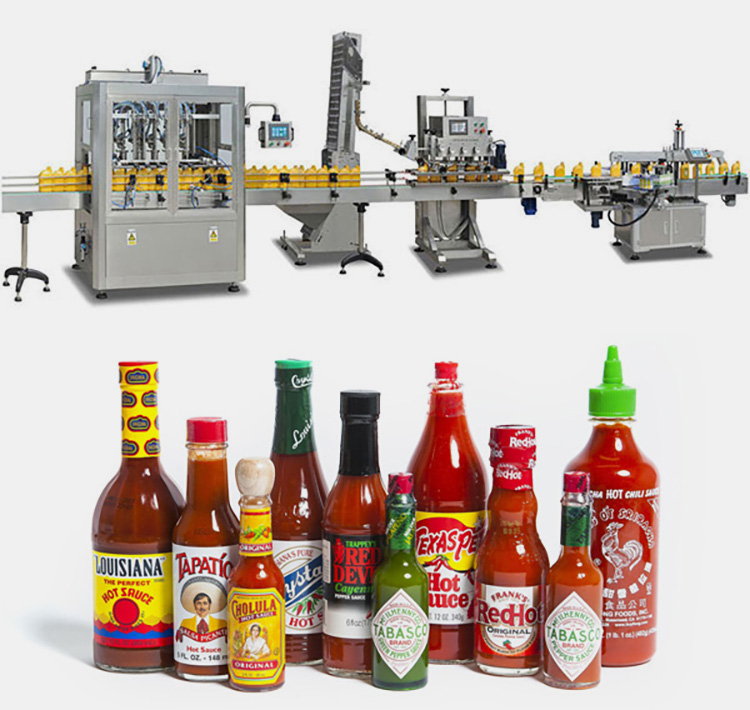
Thick or thin sauces such as ketchup and mustard can be filled using small liquid filling machines. Dressings such as honey and mayonnaise can also be filled with small liquid filling machines.
Oils
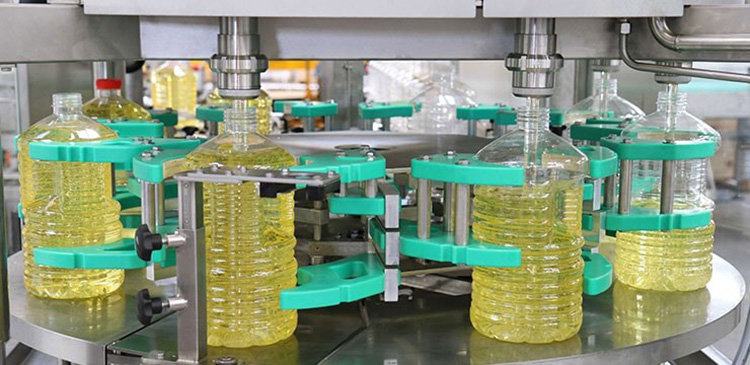
Edible oils, mineral oils and cooking oils can all be filled using small liquid filling machines. The small size allows for small-scale production of small bottles or containers.
Cosmetics
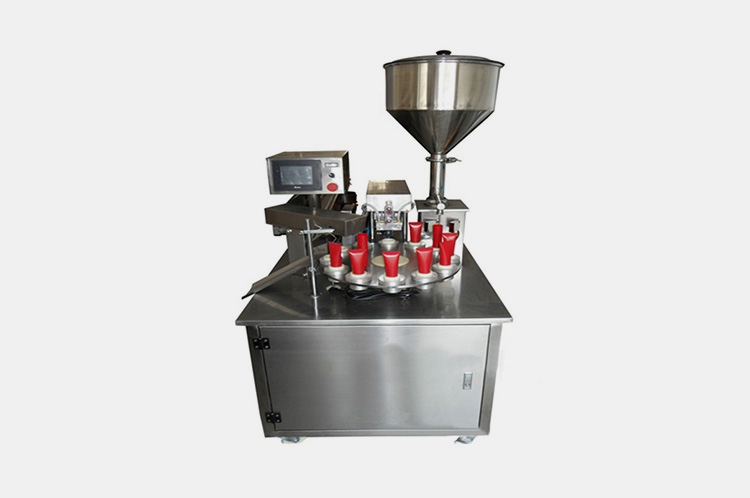
Nail polish, lipstick, lip balm and other small cosmetic products can all be filled using small liquid filling machines. The small size of the machine allows for accurate and precise filling of small quantities of product.
Pharmaceuticals
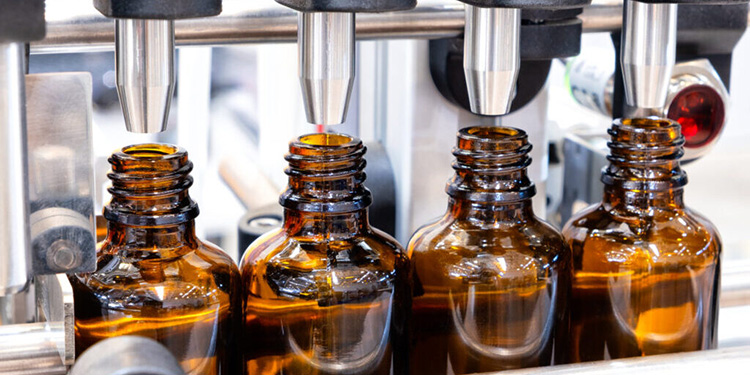
Small liquid filling machines can also be used to fill small quantities of drugs and other small pharmaceutical products. The small size allows for accurate filling of small bottles or containers.
Water
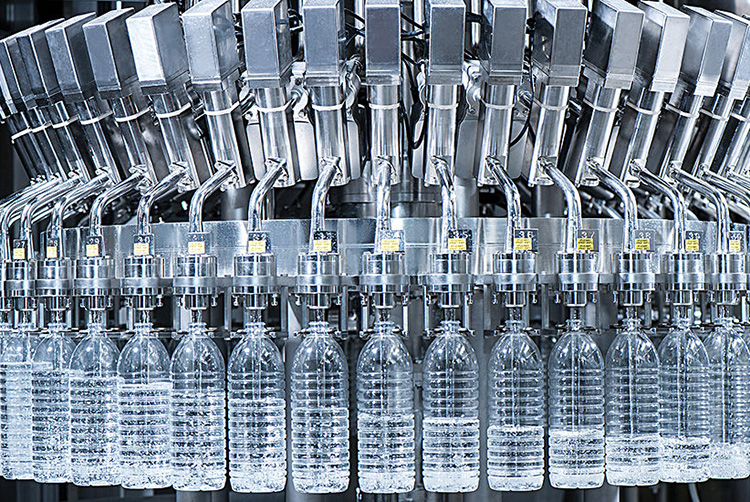
Small liquid filling machines can be used to accurately dispense small quantities of water into small containers, such as small bottles.
11.How Can You Troubleshoot A Small Liquid Filling Machine?
Here is an overview of what to look for when identifying small liquid filling machine problems:
Adjust Settings
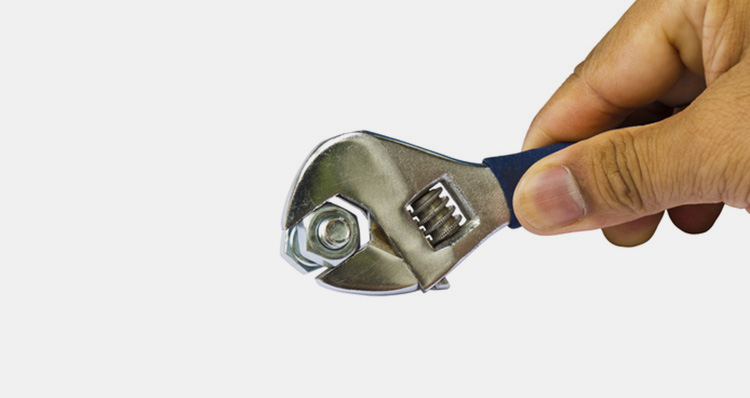
Make sure all settings and adjustments on the small liquid filling machine are set according to the manufacturer’s instructions.
Inspection
Inspect the small liquid filling machine for any physical damage or obstructions in the flow of liquid, such as clogs or valves that are not working properly.
Testing

Test the small liquid filling machine by running several small batches of liquid through, to ensure that the machine is working correctly.
Checking
Check for any software or firmware issues with the small liquid filling machine, such as a corrupted software update or a malfunctioning sensor.
Lubrication
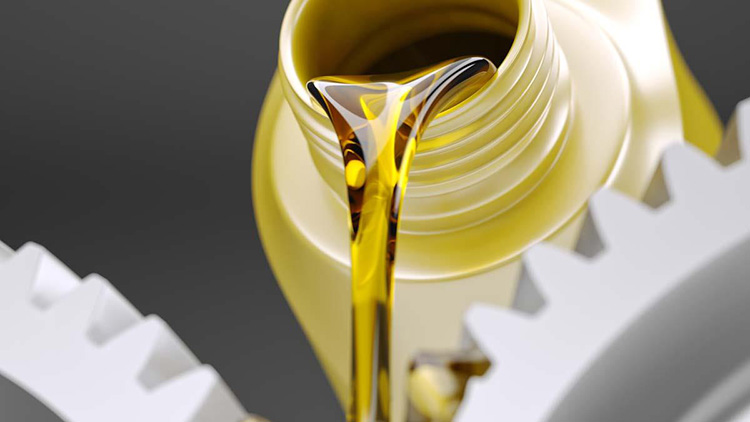
Always check the small liquid filling machine to make sure it is properly lubricated. If not, then use a proper lubricant to ensure all moving parts are well-oiled and running smoothly.
CONCLUSION
In conclusion, a small liquid filling machine can provide immense benefits to any business that need to fill bottles with a variety of liquids and beverages. Whether you’re packaging a single flavor soda or dozens of coffee flavors and mixing drinks, having a reliable and an accurate filling equipment is essential. The level of precision allows for efficient process control, uniform production cycles, and low product loss all within carefully monitored safety standards. Allpack offers top-quality machines along with full repair and maintenance programs; Additionally, their experienced engineers are available to consult each business on the perfect system for their needs. Don’t wait until you start struggling with your current operations; reach out today to see what a small liquid filling machine could do for your business. Contact Allpack today for more information about their range of machines and services!
Don't forget to share this post!
CONTACT US
Tell us your raw material and project budget to get quotations within 24 hours.
WhatsApp Us: +86 181 7101 8586
The Buyer's Guide


